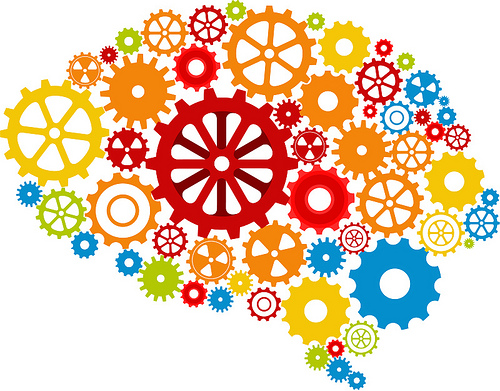Think about when you are at your absolute best, doing something you enjoy. Do you have to think about it, or does it just flow?
If you know what I’m talking about, you’ve likely experienced a flow state. In a flow state, consciousness dims, and in what feels like something taking over, the subconscious rises to the forefront of mind, facilitating maximum human performance. Flow is characterized by complete absorption in what one does.
Behind flow states is some complex neurobiology, at the heart of which is a brain state called transient hypofrontality. Transient hypofrontality is characterized by a temporary lessening of brain activity, particularly in the pre-frontal cortex of the brain, which is responsible for logic, decision making, self-auditing, and spatial orientation, among other very important things.
But these three are important, because in a flow state we no longer apply logic to our thoughts, we don’t really make conscious decisions—the inner critic is rendered mute—and in extreme cases one may even lose feeling of body orientation. Not only does it feel great, but also it induces personal growth like no other mode of consciousness can.
If you’re flowing, you’re growing.
And all of this gets even more interesting, because transient hypofrontality also happens to be one of the most distinguishable indicators of someone in deep meditation.
Throughout history, Eastern cultures have been interested in training their minds via some form of spirituality. This was done primarily by meditation, in which they honed their focus to achieve a calm demeanor and feelings of self-transcendence.
These practices often strive for a non–dual awareness, which essentially means the loss of ego or loss of self. This is very similar, if not the same, as experiencing extreme flow. Intense focus and presence of mind are necessary to achieve this. Meditative practices have shown to help practitioners induce flow states. Some martial arts and yoga practices act as engineered flow activities, as well.
During flow the mind feels taken over by something beyond consciousness. As a result, these experiences have traditionally been taken out of context. They are likely responsible for beliefs of channeling God or the Universe. In his book, Waking Up, neuroscientist, Sam Harris points out that brain states of flow and self-transcendence are likely behind much mysticism and many of the world’s religions.4
But despite the mysticism to which many ascribe these states, meditation’s positive effect on consciousness cannot be denied.
All conscious thought depends on underlying causes which are themselves not conscious or controlled. The subconscious mind is the real architect of our lives; consciousness is merely an interface for experience.
Free-will may be part of the mind, but if watch closely we find that, if anything, it’s very limited. Modern neuroscience can back up this statement. But the point is, everything we think and do is generally a product of deeper brain functions than we’re capable of understanding.
Knowing this about the mind, we can think of becoming a better person in terms of developing the subconscious. Since the future is unpredictable, the idea is to learn skills in the moment that have broad applications going forward.
How might we do that?
We think in English. So we can think better if we read.
We think in causal connections of ideas. The more we know, the better.
We can improve coordination by practicing functional movement skills.
We can self-regulate better by paying more attention to the mind.
This list applies to almost any learned skill. The subconscious thrives on learning. And not just ideas, but also movements, balance, mental techniques, and maybe even personality traits.
But learning of this sort depends on something very important: focus.
So now, we’re back where we started with meditation, which sharpens focus, among other things, without the need of mysticism.
Meditation is a means of mind-management.
It hones the ability to focus in the moment and it primes the subconscious for the total absorption needed to achieve flow states and skill mastery.
The idea of training the spirit just means training the subconscious. It’s learning new things to become better versions of ourselves. The brain really likes to learn new things. It hooks us up with feel-good neurotransmitters whenever it does.
Give it a try!
Relephant:
Hacking Enlightenment with Flow States
Author: Justin Testerman
Apprentice Editor: Jessica Chardoulias/ Editor: Travis May
Photo: Flickr/ Jean-Remy Duboc


 Share on bsky
Share on bsky





Read 2 comments and reply